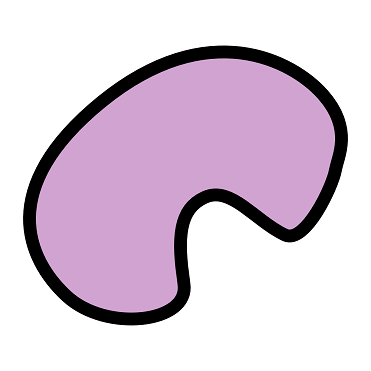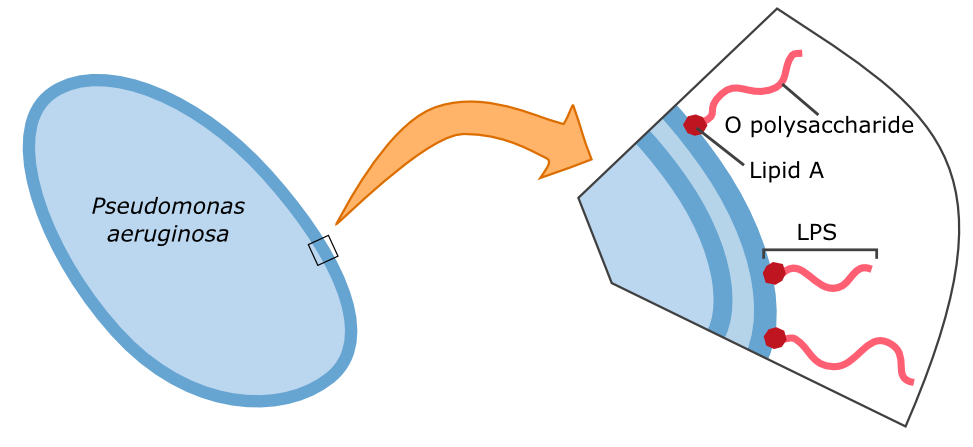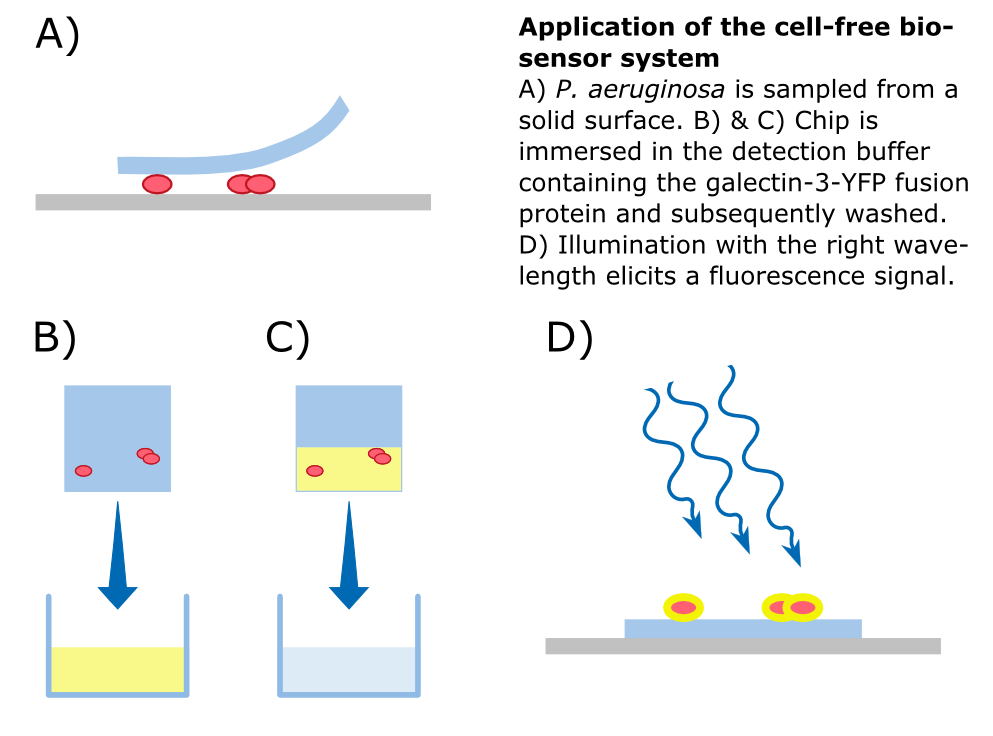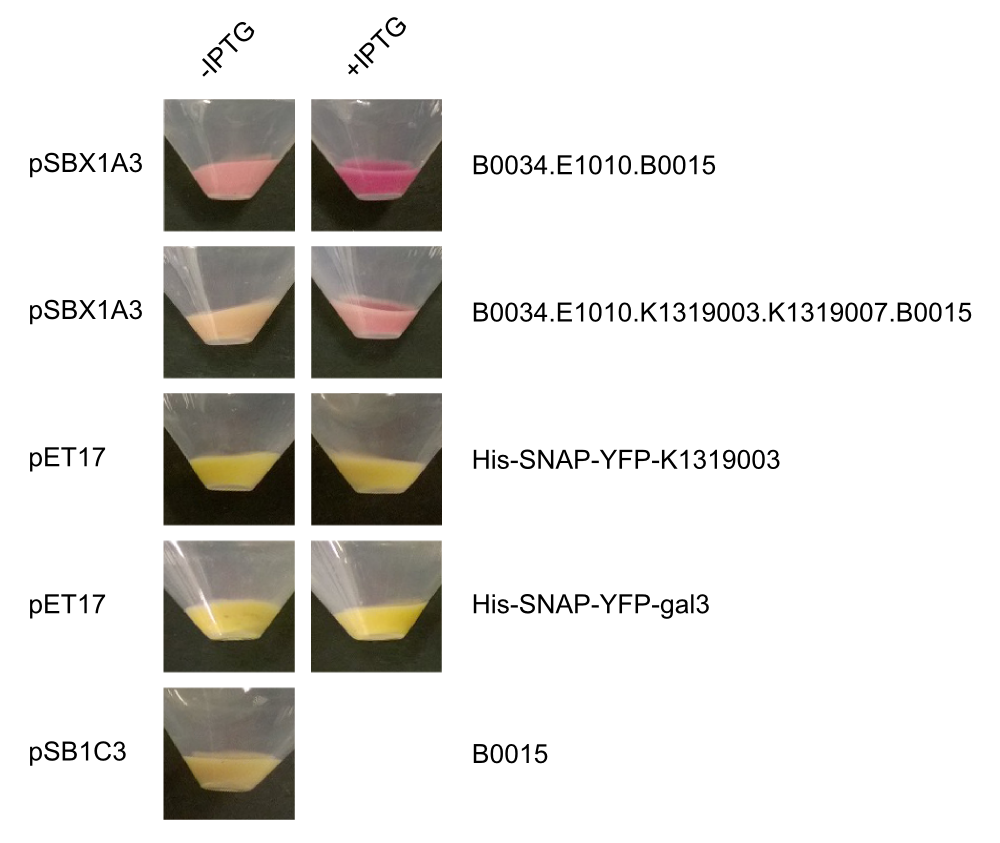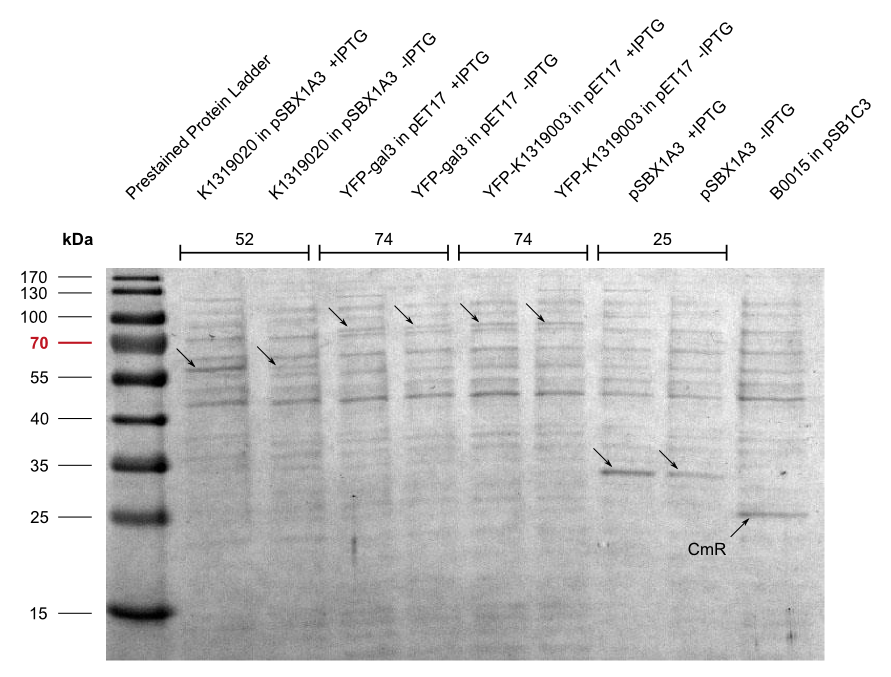Team:Aachen/Project/Gal3
From 2014.igem.org
(→An Alternative Sensing Molecule) |
(→An Alternative Sensing Molecule) |
||
| Line 72: | Line 72: | ||
{{Team:Aachen/FigureFloat|Aachen_14-10-09_Pseudomonas_LPS_iNB.png|title=Cell wall composition of ''P. aeruginosa''|subtitle=Gram-negative bacteria have two cell membranes. The LPS are embedded in the outer membrane and are composed of a lipid and an O polysaccharide.|width=420px}} | {{Team:Aachen/FigureFloat|Aachen_14-10-09_Pseudomonas_LPS_iNB.png|title=Cell wall composition of ''P. aeruginosa''|subtitle=Gram-negative bacteria have two cell membranes. The LPS are embedded in the outer membrane and are composed of a lipid and an O polysaccharide.|width=420px}} | ||
| - | + | Characteristic parts of the '''lipopolysaccharide structure (LPS)''' of ''P. aeruginosa'' can be bound by galectin-3. Specifically, the O polysaccharide (see figure on the left) of the LPS is recognized by galectin-3. Therefore, this specific binding of galectin-3 enables the construction of a fluorescent based detection system. A fusion protein of galectin-3 and a reporter protein, such as a fluorescent protein, can be built and applied in the detection of ''P. aeruginosa''. | |
| - | In our approach, a '''galectin-3-YFP fusion protein''' is built and expressed in ''E. coli'' | + | In our approach, a '''galectin-3-YFP fusion protein''' is built and expressed in ''E. coli'', including a his-tag and a snap-tag for purification. The fusion protein can then be incorporated into a '''cell-free biosensor system'''. These biosensors have many advantages over systems that use living cells such as an uncomplicated storage. Furthermore, from a [https://2014.igem.org/Team:Aachen/Safety biosafety] and social acceptance point of view, it is advantageous if the sensor system does not contain alive genetically modified organisms. |
{{Team:Aachen/FigureFloatRight|align=center|Aachen_14-10-09_Cell_Free_Biosensor_iNB.png|width=500px}} | {{Team:Aachen/FigureFloatRight|align=center|Aachen_14-10-09_Cell_Free_Biosensor_iNB.png|width=500px}} | ||
| Line 81: | Line 81: | ||
| - | To detect ''P. aeruginosa'' cells, an agar chip could be used to sample a solid surface. However, other materials but agar can be considered to collect | + | To detect ''P. aeruginosa'' cells, an agar chip could be used to sample a solid surface. However, other materials but agar can be considered to collect pathogens. The cells stick to the sampling chip which is then immersed in a detection buffer containing the galectin-3-YFP fusion protein. Excess protein is removed during washing in a suitable buffer. The galectin-3 remains bound to the pathogen and '''illumination with 514 nm''', the excitation wavelength of YFP, in a modified version of our measurement device reveals the location of the cells. The picture taken by the measurement device can then be analyzed by our software ''Measurarty''. |
{{Team:Aachen/BlockSeparator}} | {{Team:Aachen/BlockSeparator}} | ||
Revision as of 02:10, 18 October 2014
|
|
|
|
 "
"
